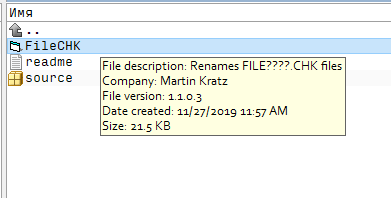
When SCANDISK or CHKDISK is run, all the parts. Without this info, Windows cant find all the parts of the file. The best option is to make a backup to prevent if you lost the data or your files are corrupt you can recover from it. Part of closing is writing all the file location information in all the right places. If you don't need the CHK files, you can delete it. You can extract the CHK files manually, but you must an advanced user.

And of course, this tool also does not guarantee the recovery process will succeed. This unCHK tool will find all CHK files and extracting them where possible. This tool can help out recovering the data from the CHK file. However, if you insist on doing that, there a third-party tool called UnCHK.

Your chance is small to recover your data from the CHK file. After all, recovery from these CHK files also does not guarantee your files will recover. If possible, recover your lost or corrupted data from your backup data.

A single log file often contains operations for multiple databases. All the databases share a single log stream. Theres a checkpoint file for each log stream, and a separate log stream for each database. Unless your data is important and you don't have any backup, you don't need to deal with this CHK file. The checkpoint file (Enn.chk) tracks how far Exchange has progressed in writing logged information to the database files. In any case, you will be fine to delete “FOUND.000”, “DIR000.CHK” or “FILE000.CHK” folder and files. You need to enable “show hidden files” setting on Folder Options to able to see this file. Or if you open your USB drive, and you find the folder and file sits there, it means that the file inside it is a recovery file from USB itself. If you find the “FOUND.000” folder and “FILE000.CHK” files on drive C:\ that means inside it is the recovery file from drive C:\. Where files and folders exist, that is where the problem occurs. When the “Check Disk” runs and finds corrupted data, rather than deleting, the “Check Disk” tool creates those folders and puts the file inside it. Windows automatically runs the built-in “chkdsk” tool when the Windows detect a problem with the file system.

Do you see a “FOUND.000” folder that contains “DIR000.CHK” or “FILE000.CHK” on some volume of your disk drive? That folder and files created by the “Check Disk” tool.


 0 kommentar(er)
0 kommentar(er)
